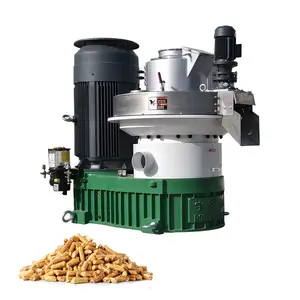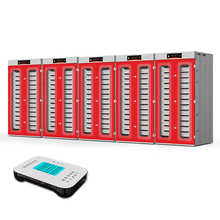At the forefront of sustainable energy solutions lies the indispensable tool known as the wood pellet machine. This innovative device plays a pivotal role in transforming biomass, such as sawdust, into efficient fuel sources. Delving into the mechanics of a wood pellet machine unveils a fascinating display of precision engineering. These machines typically consist of a series of components, including a feeder, conditioner, pellet die, and rollers. The intricate dance between these elements ensures the transformation of raw materials into compact, cylindrical pellets ready for use as a clean and sustainable energy source.
What are some variations of the wood pellet machine?
One of the primary raw materials harnessed by the wood pellet machine is sawdust, a byproduct often considered waste in various industries. The integration of the sawdust pellet machine into the production process revolutionizes waste management, providing an eco-friendly solution that not only disposes of residue but also converts it into valuable fuel pellets. The size and density of the sawdust pellets can be adjusted by changing the size of the holes in the die and the speed of the machine. Once the pellets are formed, they are cut to the desired length by a knife or cutter. The finished sawdust pellets are then cooled and collected in a storage container or bag for further use or transportation.
A biomass wood pellet machine, also known as a wood pellet mill or pellet press, is a mechanical device used to produce wood pellets from biomass materials such as wood chips, sawdust, straw, rice husk, and other agricultural residues. These pellets are cylindrical and are commonly used as a renewable fuel source for heating and cooking purposes. The process of producing wood pellets using a biomass wood pellet machine involves several steps. First, the biomass material is fed into the machine through a hopper. Inside the machine, a rotating die and rollers compress the material, forcing it through small holes in the die.
Some significant features of the wood pellet machine
Central to the wood pellet manufacturing process is the hammer mill for wood pellets. This robust machine pulverizes raw materials, breaking down sawdust and other biomass components into finely milled particles. The resulting material is then ready for the pelletization process, ensuring uniform and efficient pellet formation. The hammer mill consists of a rotating shaft with hammers attached to it. The wood materials, such as wood chips, sawdust, or wood logs, are fed into the machine through a hopper. As the shaft rotates, the hammers swing and impact the wood materials, breaking them down into smaller pieces.
In tandem with the wood pellet machine, the biomass pellet machine broadens the scope of materials that can be converted into fuel pellets. Beyond sawdust, biomass encompasses a variety of organic matter, such as agricultural residues, wood chips, and even certain types of dedicated energy crops. The versatility of the biomass pellet machine makes it a key player in the quest for greener energy alternatives. The biomass materials, such as wood chips, sawdust, straw, or corn stalks, need to be collected and prepared for pelletizing. This may involve drying the materials to reduce moisture content and grinding them into smaller particles to improve pellet quality.
















































 浙公网安备 33010002000092号
浙公网安备 33010002000092号 浙B2-20120091-4
浙B2-20120091-4